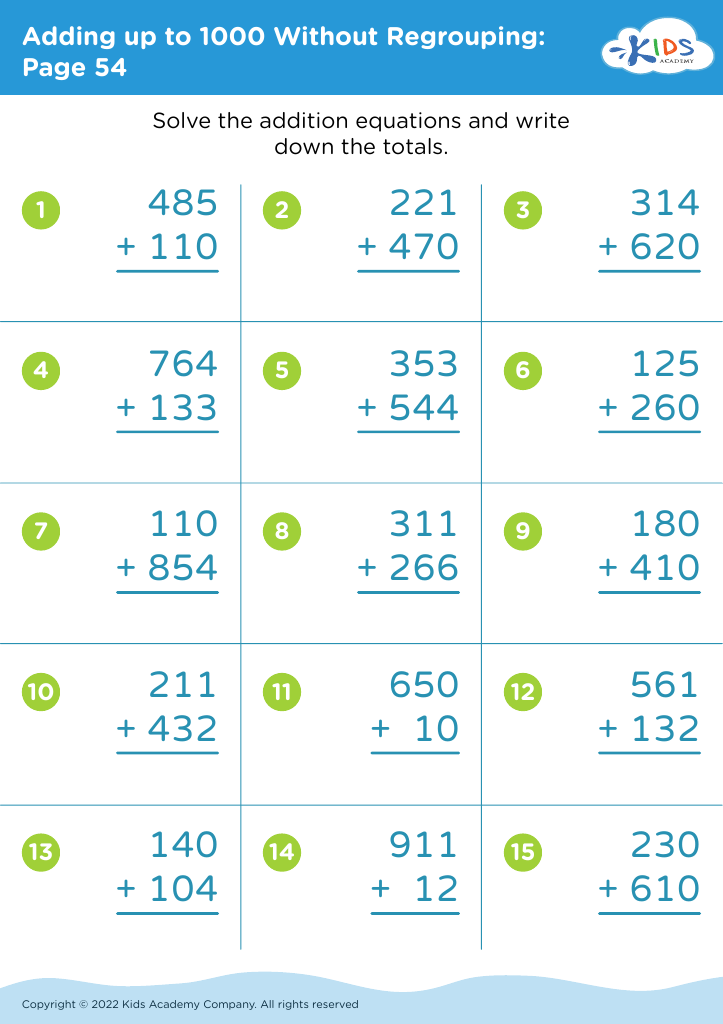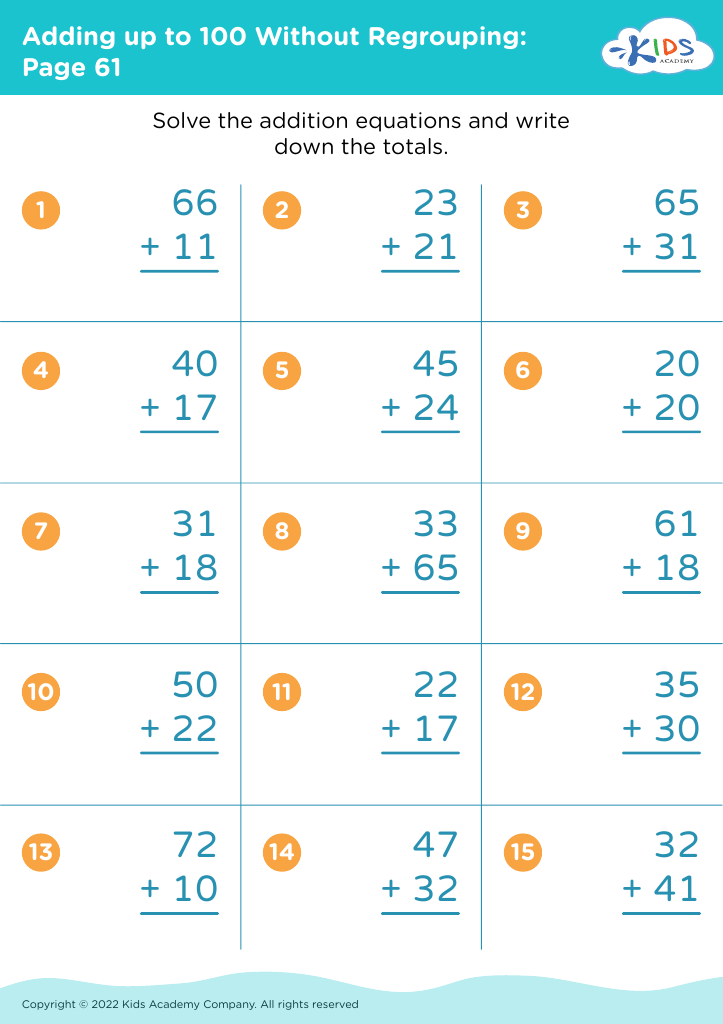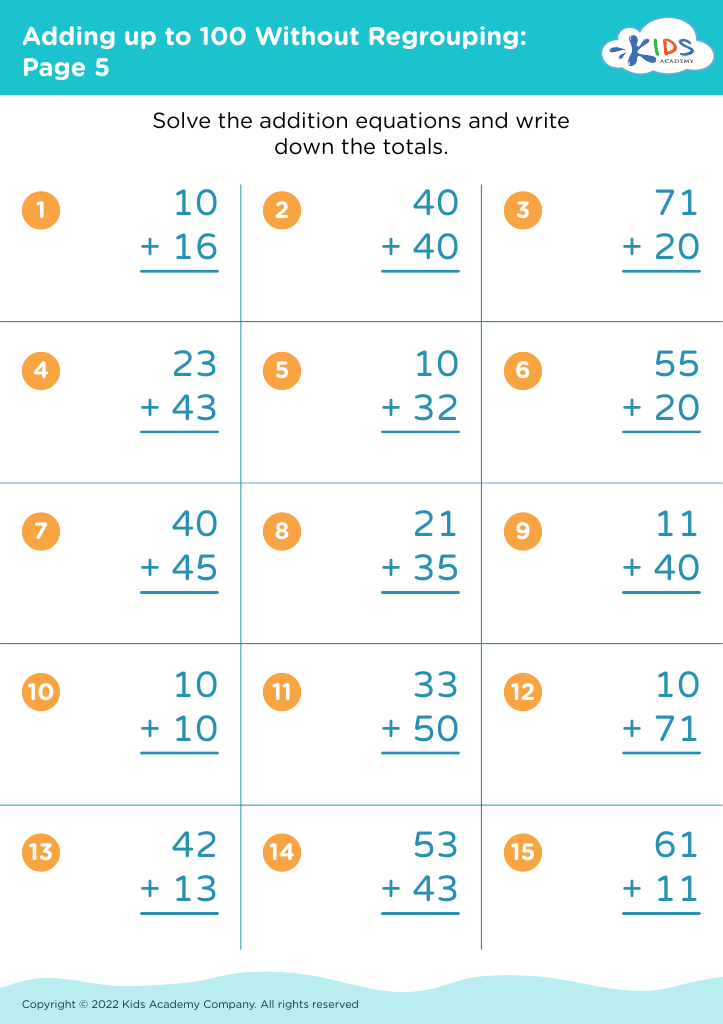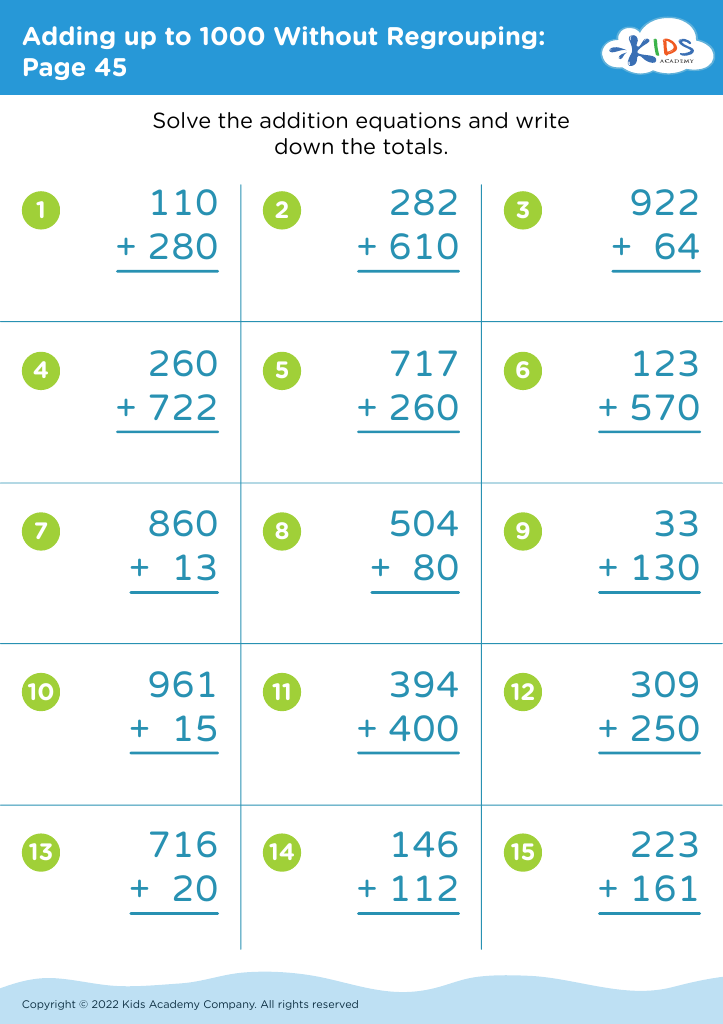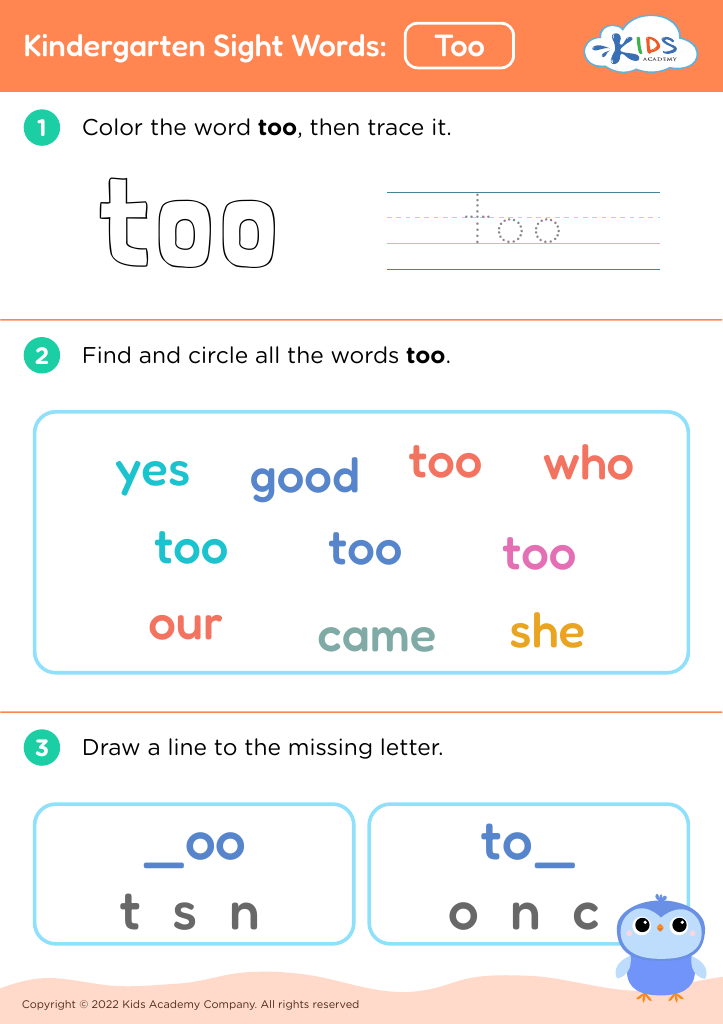Understanding division Worksheets for Kids
9 filtered results
-
From - To
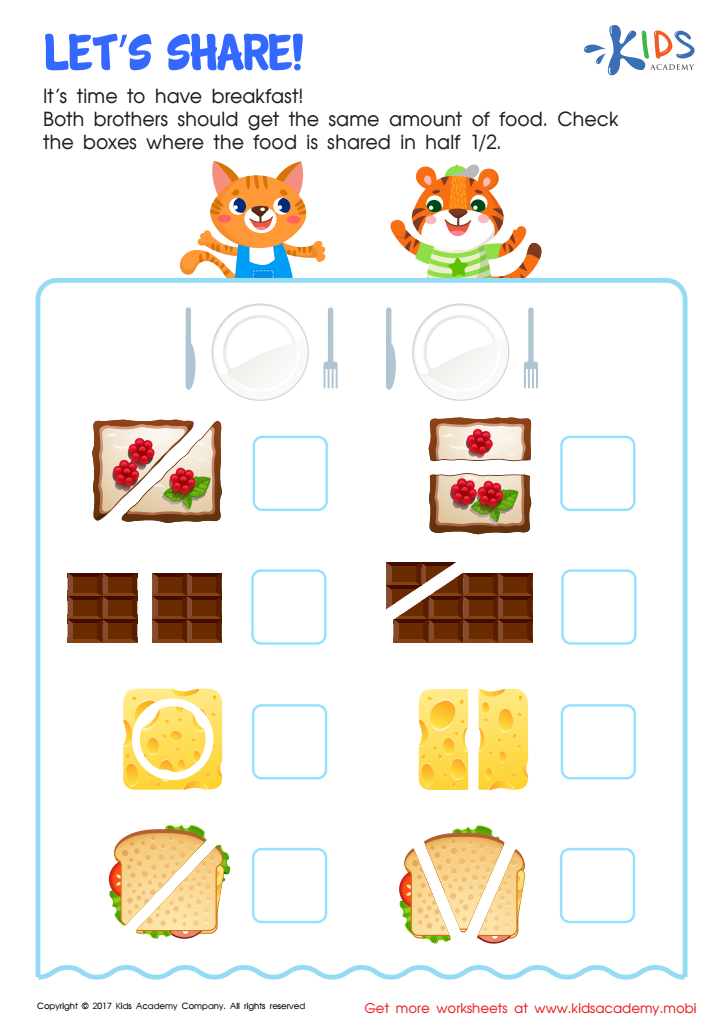

Let's Share Worksheet
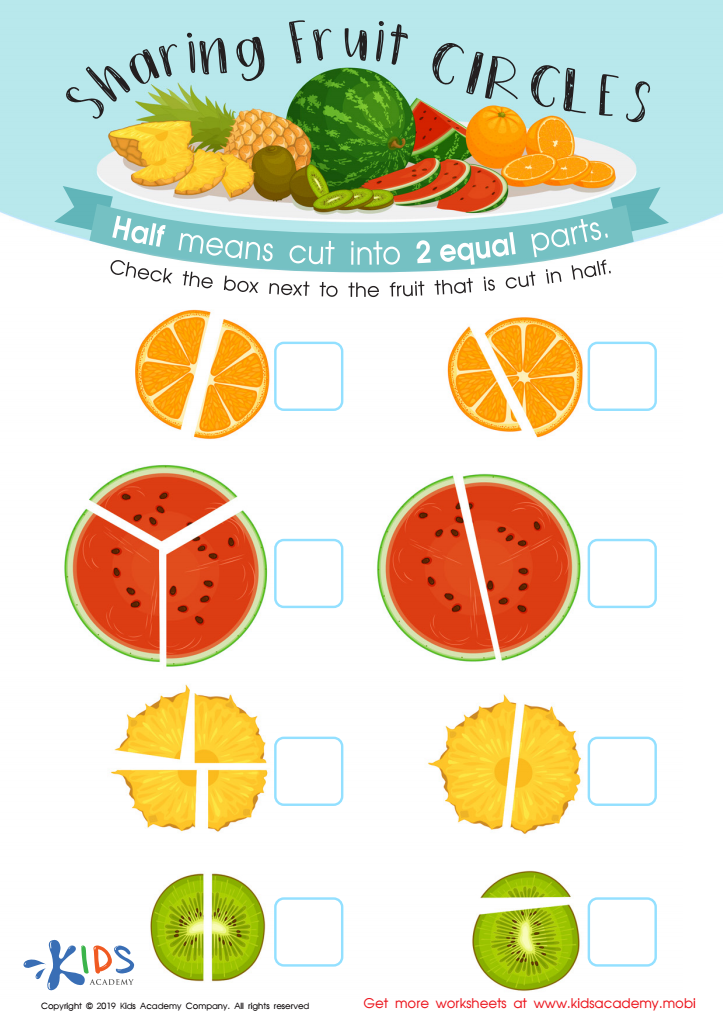

Sharing Fruit Circles Worksheet
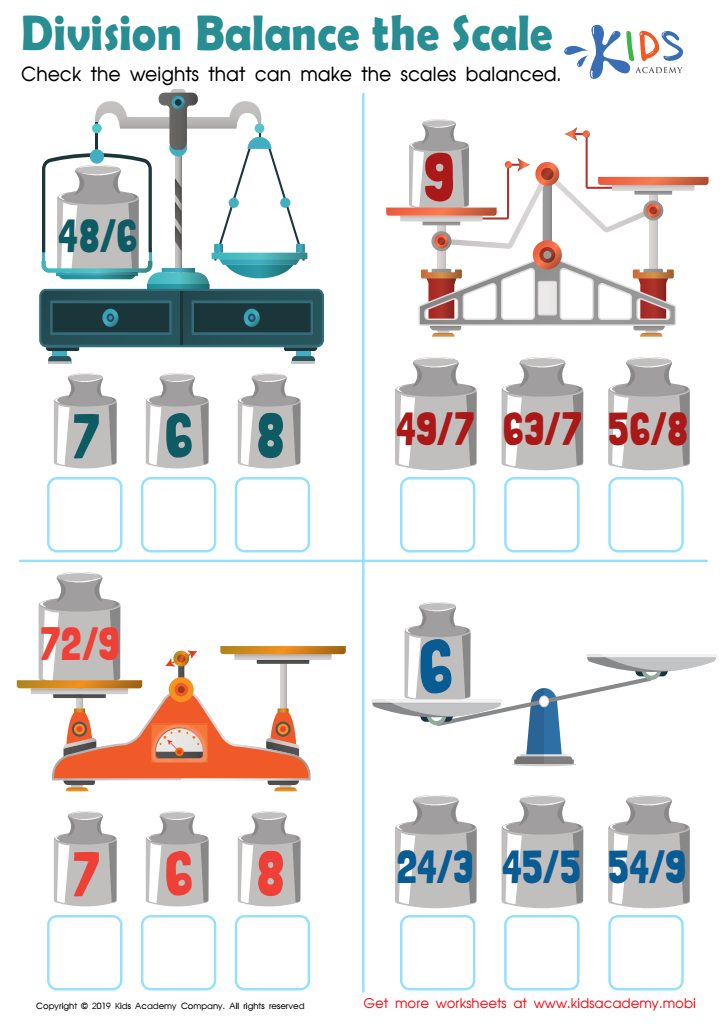

Division Balance the Scale Worksheet
Question/Answer
How to test a Grade 2 student’s Understanding division skills?
To test a Grade 2 student's understanding of division skills, present them with simple division problems using single-digit divisors and dividends that result in whole numbers. Ask them to solve problems using objects or drawings to visually demonstrate division as sharing or grouping. Include word problems to assess their ability to apply division in real-life contexts.
What are some effective activities to train students’ Understanding division skill when teaching them about Adding up to 1000 Without Regrouping?
To train students in understanding division while teaching them about adding up to 1000 without regrouping, consider activities like: 1. **Grouping objects**: Divide objects into groups to visually demonstrate division concepts. 2. **Division storytelling**: Solve word problems that involve dividing items or quantities up to 1000. 3.
What does the Understanding division skill mean when it comes to Grade 2 Adding up to 1000 Without Regrouping learning?
The Understanding division skill in the context of Grade 2 Adding up to 1000 Without Regrouping refers to the ability to recognize how division relates to subtraction and addition, and how to apply this understanding in problems without needing to regroup or carry over numbers, essentially breaking down larger numbers into smaller, manageable parts without altering the numerical structure.

 Assign to the classroom
Assign to the classroom
